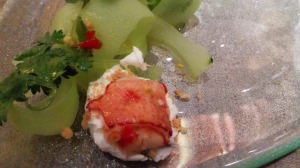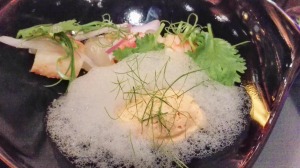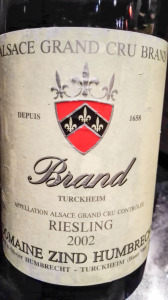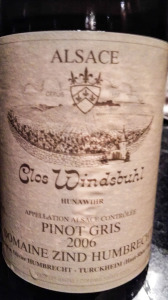Wine Dinner @ Sra Bua, Kempinsky Hotel – Bangkok
Wine n’ About attended an amazing wine dinner by Zind Humbrecht. We started a journey around an astonishing 5-courses menu.
 Each year Zind-Humbrecht produces some of Alsace’s most sumptuous and sought-after wines. The property is managed by Olivier Humbrecht, one of the world’s few winemakers to attain the M.W. status, and a passionate and intelligent advocate for the wines of Alsace and the benefits of biodynamic farming.
Each year Zind-Humbrecht produces some of Alsace’s most sumptuous and sought-after wines. The property is managed by Olivier Humbrecht, one of the world’s few winemakers to attain the M.W. status, and a passionate and intelligent advocate for the wines of Alsace and the benefits of biodynamic farming.
Under his guidance this legendary estate produces pure, powerful, racy bottling that are astonishingly faithful to their individual vineyard sites. One of the hallmarks of every Zind-Humbrecht wine is its overriding sense of terroir. Whether Gueberschwihr, Hengst, or Rotenberg, the taste of the vineyard is always clear and unmistakable. Every aspect of viticulture and winemaking is tailored around the belief that great wines are a reflection of the place. To avoid the homogenization of styles taking place around the world, Olivier has developed a regime based on Steiner’s teachings that includes low impact farming, organic composting, restricted yields, hand tending of the vines, native yeasts, and long slow fermentations on the lees in oak barrels rather than stainless steel tanks. It’s this attention to detail that has made Zind-Humbrecht the archetype of its region and one of the world’s greatest wine producing estates.
To avoid the homogenization of styles taking place around the world, Olivier has developed a regime based on Steiner’s teachings that includes low impact farming, organic composting, restricted yields, hand tending of the vines, native yeasts, and long slow fermentations on the lees in oak barrels rather than stainless steel tanks. It’s this attention to detail that has made Zind-Humbrecht the archetype of its region and one of the world’s greatest wine producing estates.
Domaine Zind-Humbrecht took a pioneering role in producing Alsace wines in concentrated, fruity style using low yields (around 30-40 hectoliter per hectare) and biodynamic viticulture. Some of these wines did have considerable residual sugar (without being intended as dessert wines), which at that time was unusual for Alsace wines.
 The level of residual sugar in Zind-Humbrecht wines may vary considerably between vintages, and acceptance of such variations is part of the biodynamic philosophy.
The level of residual sugar in Zind-Humbrecht wines may vary considerably between vintages, and acceptance of such variations is part of the biodynamic philosophy.
In order to guide the consumer to what they may expect inside the bottle, Zind-Humbrecht introduced a sweetness index on the labels from the 2001 vintage. This index is a number from 1 to 5, which is found in fine print as “Indice 1” to “Indice 5” on the label, typically next to the alcoholic content. The index is assigned based on an overall impression of the wine, and has the following meaning:
- Indice 1: analytically dry or tasting dry. (This would correspond to the classical Alsace style)
- Indice 2: not analytically dry, but the sweetness is not apparent on the palate
- Indice 3: a semi-sweet wine

- Indice 4: a sweet wine; these wines may correspond to Vendange Tardive wines from many other producers.
- Indice 5: high sweetness, corresponding to a Vendange Tardive in richness but with less noble rot character. These will be wines which Zind-Humbrecht could have bottled as Vendange Tardive, but have elected not to because of their style.
WINE TASTED
- 2002 Muscat Herrenweg de Turckheim
- 2002 Riesling Brand
- 2006 Pinot Gris Clos Windsbuhl
- 2006 Gewurztraminer Goldert
- 2004 Gewurztraminer Goldert
- 2001 Pinot Gris Clos Jebsal SGN



 0
0